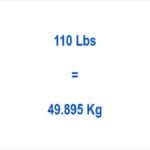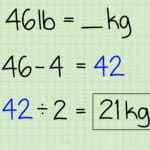Ever wondered how long 22.90 meters is if you’re more familiar with feet? Perhaps you’re dealing with international measurements, following a sporting event, or simply curious. This guide breaks down the meter-to-feet conversion process clearly and concisely, offering practical applications and addressing common questions.
Converting 22.90 Meters to Feet: A Step-by-Step Guide
Let’s get straight to the point: 22.90 meters equals precisely 75.13123 feet. How do we arrive at this number? It’s all about the conversion factor.
Understanding Meters and Feet
Before we dive into the conversion, let’s clarify what these units represent. A meter (m) is the basic unit of length in the metric system, while a foot (ft) is a unit of length in the imperial and US customary systems. One meter is approximately 3.28 feet—a key factor in our conversion process.
The Conversion Process
Here’s how to convert 22.90 meters to feet:
- The Formula: Feet = Meters * 3.28084
- The Calculation: 22.90 m * 3.28084 ≈ 75.13 ft
So, 22.90 meters is roughly equivalent to 75.13 feet. Simple enough, right?
Conversion Tools
Doing the math yourself isn’t the only option. Numerous resources can simplify the process:
- Online Converters: A quick search for “meters to feet converter” will yield plenty of reliable online tools. These are fantastic for rapid conversions.
- Calculators: Many calculators, especially scientific ones, have built-in conversion functions. This is convenient if you have a calculator handy.
Visualizing the Conversion
To help you picture this length, consider this: If you laid out 10-foot ladders end-to-end, you’d need a little over seven and a half of them to cover the same distance as 22.90 meters.
Why Accurate Conversions Matter: Real-World Applications
Understanding this conversion isn’t just an academic exercise. It has practical significance in various fields:
- Construction and Engineering: Imagine working on a blueprint where dimensions are in meters, but your materials are measured in feet. Accurate conversions are crucial for ensuring structural integrity and avoiding costly errors.
- Sports: International track and field events often measure distances in meters. Converting to feet allows for comparisons with records set using different units. A high jump of 2.27 meters, for example, translates to approximately 7.45 feet – helpful for those more familiar with imperial measurements. Ever wondered what your weight would be in a different unit of measure? Discover the equivalent of 64.4 kilos in pounds or find out how much 74.8 kg in lbs represents.
- International Trade and Shipping: Calculating accurate dimensions in both meters and feet is crucial for packaging, logistics, and ensuring goods fit properly in shipping containers.
Diving Deeper: Common Conversion Questions
Let’s address some frequently asked questions about meters and feet:
Is 10 Meters the Same as 10 Feet?
Absolutely not. 10 meters is significantly longer than 10 feet. To reiterate, 1 meter is approximately 3.28 feet, so 10 meters is about 32.8 feet. This difference is substantial and can lead to significant problems if not understood correctly.
Is a Meter Exactly 3 Feet?
While 3 feet is a close approximation, a meter is actually slightly longer. The precise conversion is 1 meter = 3.28084 feet. Using 3 feet as an equivalent can introduce inaccuracies, especially with larger measurements.
Precision Matters: Beyond the Basics
While 3.28084 is widely accepted, ongoing research in metrology (the science of measurement) might lead to minor refinements of this value in the future. Additionally, different fields may require varying levels of precision. For everyday use, 3.28 is usually sufficient, but in engineering or scientific research, greater precision might be necessary.
Here’s a table showcasing the increasing difference between using the approximate and precise conversion factors as the length in meters grows:
| Meters (m) | Feet (ft) (Approximation) | Feet (ft) (Precise) |
|---|---|---|
| 1 | 3.28 | 3.28084 |
| 5 | 16.40 | 16.4042 |
| 10 | 32.80 | 32.8084 |
| 22.90 | 75.11 | 75.131236 |
This table highlights why understanding the precise conversion, and the potential for error when using approximations, is critical, particularly when dealing with longer distances.
By understanding the principles and nuances of this conversion, you can navigate the world of measurement with confidence and accuracy. Whether you’re working on a complex project or simply trying to grasp the length of something described in meters, this comprehensive guide provides the knowledge you need.
- Discover Long Black Pepper: Flavor & Health Benefits - April 25, 2025
- Shocking Twists: The Grownup Review: Unreliable Narration - April 25, 2025
- A Quiet Place Book vs Movie: A Deep Dive - April 25, 2025
















